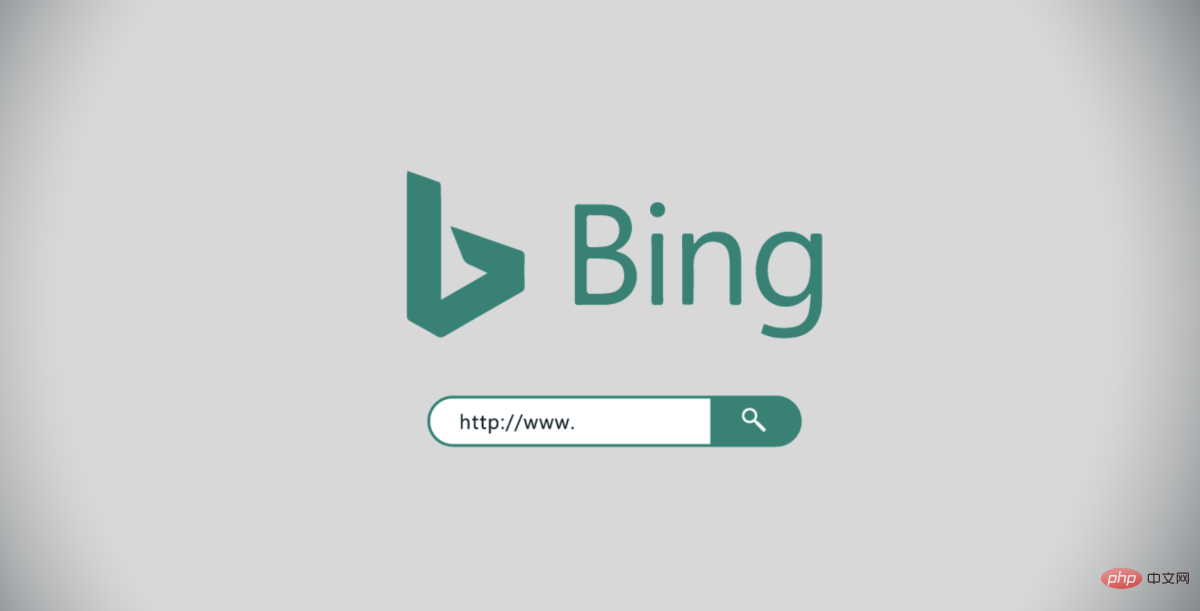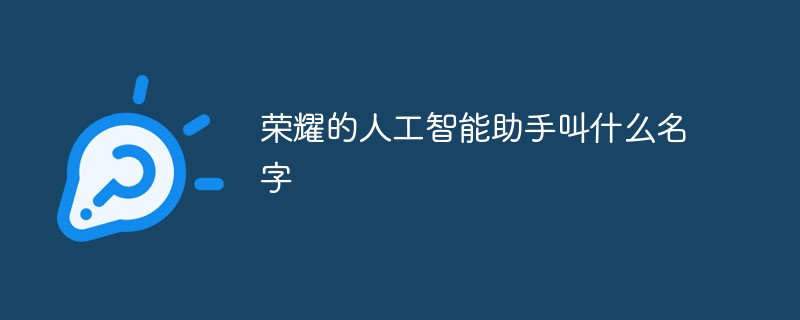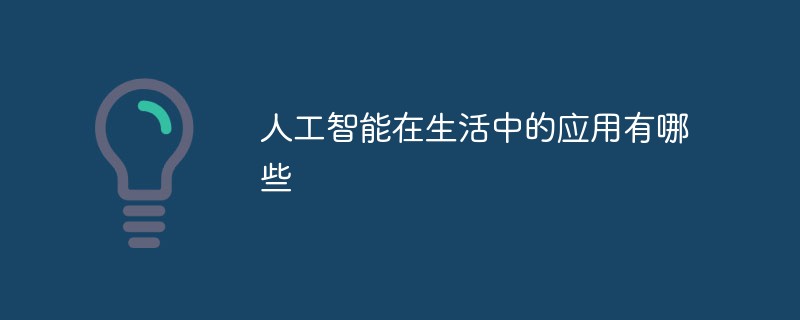 Technology peripherals
Technology peripherals AI
AI How can technologies such as artificial intelligence (AI) and the Internet of Things improve the patient healthcare experience?
How can technologies such as artificial intelligence (AI) and the Internet of Things improve the patient healthcare experience?While we are still a long way from robots running human health services, the Internet of Things (IoT) has the power to revolutionize the patient healthcare experience. The new post-COVID-19 reality presents an ideal opportunity for healthcare services to put patients front and center in their health journey.

Great progress has been made, but there is still room for improvement. As KPMG’s “Connected Health: The New Reality of Healthcare” survey found, 80% of healthcare leaders rank customer-centric strategies as a top priority, but only 10% believe they are consistently outperforming patients expectations. Additionally, digital barriers, such as difficulty sharing patient data and analytics, were cited as the most important gaps.
Connectivity can improve patients’ healthcare experience
By enabling devices and systems to connect and share data, IoT helps provide a 360-degree view of patient health, allowing clinicians to Make decisions faster. The ability of technologies such as artificial intelligence (AI) and machine learning to derive insights from data offers tremendous potential to improve patient care.
From preventive care to critical care services, these tools promote a seamless patient-centered health experience across the continuum of care and support the healthcare industry's transition to value-based care models.
How Technology Can Support Patients’ Healthcare Experience
While the name may suggest otherwise, the true power of the Internet of Things lies in its ability to help people. Nowhere is this more evident than in healthcare.
For patients, healthcare technology enables greater access to quality healthcare delivered according to their needs and preferences.
Healthcare technology enables patients to:
- Receive care in a setting of their choice, such as home, at a time that is convenient for them.
- Conduct remote monitoring to support preventive care and timely delivery of interventions.
- Benefit from a continuous and collaborative approach to care as critical data is collected, analyzed and shared among practitioners.
- Get personalized health insights and guidance through connected medical devices.
The WestMoretonMeCare program is a good example. In this project, a partnership between Philips and West Moreton Health Queensland, patients with challenging health conditions use remote monitoring to measure and record health indicators, such as blood pressure, and speak with a nurse on a daily basis, all from the comfort of their own home. conduct. This gives patients greater control over their health and facilitates early intervention from practitioners, such as GPs or nurses, when needed. This patient-centered approach resulted in a 35% reduction in potentially preventable hospitalizations, while patient confidence and mental health improved.
The flexibility of this care delivery model allows WestMoretonMeCare to scale programs to support COVID-19 patients recovering at home, reducing the need for hospital services and reducing the risk of transmission. As of August 2021, the program has expanded to include mental health virtual care for people with borderline personality disorder.
On the other side of Australia, Philips is partnering with East Metropolitan Health Service in Western Australia to deliver a care model designed to enhance the patient experience and improve health outcomes, while reducing the cost of care and improving the working lives of care providers. The Clinical Command Center solution is located at the Royal Perth Hospital and oversees inpatients in lower wards and intensive care units. It uses machine learning and predictive analytics to predict patient deterioration and prioritize those most in need of intervention, helping to reduce hospital stays, complications, avoidable transfers and mortality.
Studies show this technology can improve patient experience and outcomes, including:
- 26% reduction in mortality.
- The stay time is reduced by 30%3.
- 15% of patients can be discharged home sooner.
- How technology is helping clinicians and healthcare leaders.
For clinicians, IoT enables real-time and longitudinal data capture, as well as the integration of data from various medical devices. Artificial intelligence and machine learning can transform this data into useful insights that can be combined with clinical knowledge to facilitate decision-making.
Technology can also provide insights into operational performance and identify issues before they escalate, allowing healthcare providers to optimize workflow, continuity of care and cost efficiency.
For healthcare leaders and policymakers, technology can connect health networks and provide insights to facilitate evidence-based and data-driven strategy and policy development. For example, data analysis can identify the need for increased investment or resources in different communities.
Making digital health mainstream
Digital transformation is top of mind for many healthcare leaders as they seek to build a resilient and future-proof healthcare system. According to Accenture’s 2021 Digital Health Technology Vision Report 5, technology is driving “accelerated digital transformation” and is reshaping industries and human experiences. They urge the healthcare industry to be good at change and "recognize that there is no leadership without technology leadership."
As KPMG points out, successful digital transformation requires a number of key capabilities, including responsive supply chain and operations, digital technology architecture, and an integrated ecosystem of partners and alliances.
Australia has the technology and capabilities to deliver a digital health future. Their health systems can play a leading role in overcoming barriers and transforming digital innovations into sustainable and integrated programmes.
This can be assisted by:
- Implementing public policies such as access to healthcare innovation grants and improving practitioner training and education.
- Prioritize investing in healthcare technology solutions.
- Enhance patients’ adaptability and immersion in digital health.
- Promote partnerships and drive innovation.
It can be seen that the future of digital health will be built in a collaborative ecosystem that is people-centered and driven by partnerships.
Patient experience is at the heart of healthcare innovation
As partnerships come online and new technologies are increasingly integrated into healthcare, patients can expect a fundamental transformation in the healthcare experience. Technologies such as remote monitoring will facilitate enhanced experiences that allow patients to receive care when and where it suits them, while promoting better outcomes through early identification of warning signs and faster access to interventions.
At the same time, emerging technologies such as artificial intelligence and machine learning will support practitioner experience. Their ability to transform raw data into actionable insights can help practitioners make informed health decisions and deliver informed treatments that lead to better health outcomes.
Increased investment and stakeholder engagement can ensure that the potential of healthcare is realized and that the future of healthcare delivers the outcomes that patients and practitioners alike seek. At the same time, we are committed to developing solutions that improve the patient experience and enable healthcare providers to gain critical insights that guide clinical decision-making.
The above is the detailed content of How can technologies such as artificial intelligence (AI) and the Internet of Things improve the patient healthcare experience?. For more information, please follow other related articles on the PHP Chinese website!
 2023年机器学习的十大概念和技术Apr 04, 2023 pm 12:30 PM
2023年机器学习的十大概念和技术Apr 04, 2023 pm 12:30 PM机器学习是一个不断发展的学科,一直在创造新的想法和技术。本文罗列了2023年机器学习的十大概念和技术。 本文罗列了2023年机器学习的十大概念和技术。2023年机器学习的十大概念和技术是一个教计算机从数据中学习的过程,无需明确的编程。机器学习是一个不断发展的学科,一直在创造新的想法和技术。为了保持领先,数据科学家应该关注其中一些网站,以跟上最新的发展。这将有助于了解机器学习中的技术如何在实践中使用,并为自己的业务或工作领域中的可能应用提供想法。2023年机器学习的十大概念和技术:1. 深度神经网
 人工智能自动获取知识和技能,实现自我完善的过程是什么Aug 24, 2022 am 11:57 AM
人工智能自动获取知识和技能,实现自我完善的过程是什么Aug 24, 2022 am 11:57 AM实现自我完善的过程是“机器学习”。机器学习是人工智能核心,是使计算机具有智能的根本途径;它使计算机能模拟人的学习行为,自动地通过学习来获取知识和技能,不断改善性能,实现自我完善。机器学习主要研究三方面问题:1、学习机理,人类获取知识、技能和抽象概念的天赋能力;2、学习方法,对生物学习机理进行简化的基础上,用计算的方法进行再现;3、学习系统,能够在一定程度上实现机器学习的系统。
 超参数优化比较之网格搜索、随机搜索和贝叶斯优化Apr 04, 2023 pm 12:05 PM
超参数优化比较之网格搜索、随机搜索和贝叶斯优化Apr 04, 2023 pm 12:05 PM本文将详细介绍用来提高机器学习效果的最常见的超参数优化方法。 译者 | 朱先忠审校 | 孙淑娟简介通常,在尝试改进机器学习模型时,人们首先想到的解决方案是添加更多的训练数据。额外的数据通常是有帮助(在某些情况下除外)的,但生成高质量的数据可能非常昂贵。通过使用现有数据获得最佳模型性能,超参数优化可以节省我们的时间和资源。顾名思义,超参数优化是为机器学习模型确定最佳超参数组合以满足优化函数(即,给定研究中的数据集,最大化模型的性能)的过程。换句话说,每个模型都会提供多个有关选项的调整“按钮
 得益于OpenAI技术,微软必应的搜索流量超过谷歌Mar 31, 2023 pm 10:38 PM
得益于OpenAI技术,微软必应的搜索流量超过谷歌Mar 31, 2023 pm 10:38 PM截至3月20日的数据显示,自微软2月7日推出其人工智能版本以来,必应搜索引擎的页面访问量增加了15.8%,而Alphabet旗下的谷歌搜索引擎则下降了近1%。 3月23日消息,外媒报道称,分析公司Similarweb的数据显示,在整合了OpenAI的技术后,微软旗下的必应在页面访问量方面实现了更多的增长。截至3月20日的数据显示,自微软2月7日推出其人工智能版本以来,必应搜索引擎的页面访问量增加了15.8%,而Alphabet旗下的谷歌搜索引擎则下降了近1%。这些数据是微软在与谷歌争夺生
 荣耀的人工智能助手叫什么名字Sep 06, 2022 pm 03:31 PM
荣耀的人工智能助手叫什么名字Sep 06, 2022 pm 03:31 PM荣耀的人工智能助手叫“YOYO”,也即悠悠;YOYO除了能够实现语音操控等基本功能之外,还拥有智慧视觉、智慧识屏、情景智能、智慧搜索等功能,可以在系统设置页面中的智慧助手里进行相关的设置。
 30行Python代码就可以调用ChatGPT API总结论文的主要内容Apr 04, 2023 pm 12:05 PM
30行Python代码就可以调用ChatGPT API总结论文的主要内容Apr 04, 2023 pm 12:05 PM阅读论文可以说是我们的日常工作之一,论文的数量太多,我们如何快速阅读归纳呢?自从ChatGPT出现以后,有很多阅读论文的服务可以使用。其实使用ChatGPT API非常简单,我们只用30行python代码就可以在本地搭建一个自己的应用。 阅读论文可以说是我们的日常工作之一,论文的数量太多,我们如何快速阅读归纳呢?自从ChatGPT出现以后,有很多阅读论文的服务可以使用。其实使用ChatGPT API非常简单,我们只用30行python代码就可以在本地搭建一个自己的应用。使用 Python 和 C
 人工智能在教育领域的应用主要有哪些Dec 14, 2020 pm 05:08 PM
人工智能在教育领域的应用主要有哪些Dec 14, 2020 pm 05:08 PM人工智能在教育领域的应用主要有个性化学习、虚拟导师、教育机器人和场景式教育。人工智能在教育领域的应用目前还处于早期探索阶段,但是潜力却是巨大的。
 人工智能在生活中的应用有哪些Jul 20, 2022 pm 04:47 PM
人工智能在生活中的应用有哪些Jul 20, 2022 pm 04:47 PM人工智能在生活中的应用有:1、虚拟个人助理,使用者可通过声控、文字输入的方式,来完成一些日常生活的小事;2、语音评测,利用云计算技术,将自动口语评测服务放在云端,并开放API接口供客户远程使用;3、无人汽车,主要依靠车内的以计算机系统为主的智能驾驶仪来实现无人驾驶的目标;4、天气预测,通过手机GPRS系统,定位到用户所处的位置,在利用算法,对覆盖全国的雷达图进行数据分析并预测。


Hot AI Tools

Undresser.AI Undress
AI-powered app for creating realistic nude photos

AI Clothes Remover
Online AI tool for removing clothes from photos.

Undress AI Tool
Undress images for free

Clothoff.io
AI clothes remover

AI Hentai Generator
Generate AI Hentai for free.

Hot Article

Hot Tools

EditPlus Chinese cracked version
Small size, syntax highlighting, does not support code prompt function

MinGW - Minimalist GNU for Windows
This project is in the process of being migrated to osdn.net/projects/mingw, you can continue to follow us there. MinGW: A native Windows port of the GNU Compiler Collection (GCC), freely distributable import libraries and header files for building native Windows applications; includes extensions to the MSVC runtime to support C99 functionality. All MinGW software can run on 64-bit Windows platforms.

SublimeText3 Chinese version
Chinese version, very easy to use

PhpStorm Mac version
The latest (2018.2.1) professional PHP integrated development tool

SublimeText3 Linux new version
SublimeText3 Linux latest version





